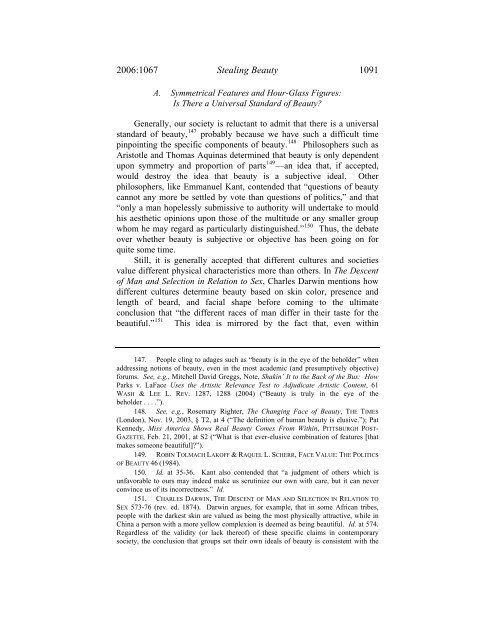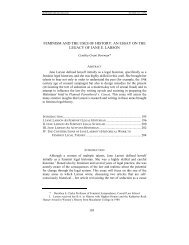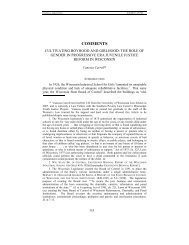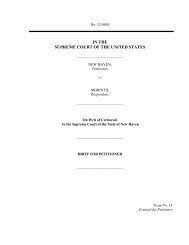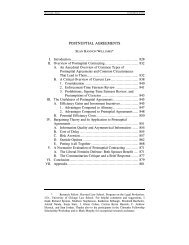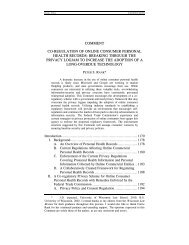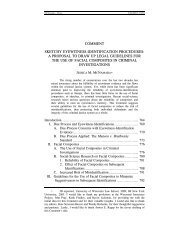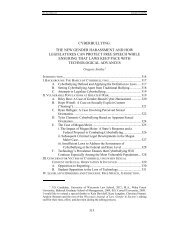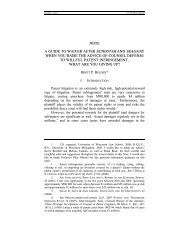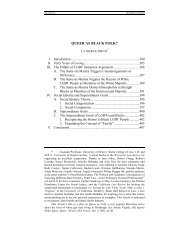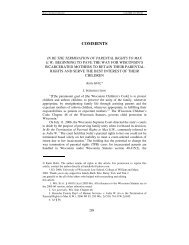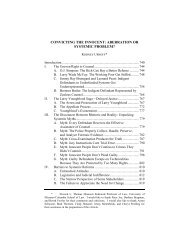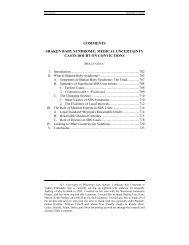Stealing Beauty: Pivot Point International v ... - UW Law School
Stealing Beauty: Pivot Point International v ... - UW Law School
Stealing Beauty: Pivot Point International v ... - UW Law School
Create successful ePaper yourself
Turn your PDF publications into a flip-book with our unique Google optimized e-Paper software.
2006:1067 <strong>Stealing</strong> <strong>Beauty</strong> 1091<br />
A. Symmetrical Features and Hour-Glass Figures:<br />
Is There a Universal Standard of <strong>Beauty</strong>?<br />
Generally, our society is reluctant to admit that there is a universal<br />
standard of beauty, 147 probably because we have such a difficult time<br />
pinpointing the specific components of beauty. 148 Philosophers such as<br />
Aristotle and Thomas Aquinas determined that beauty is only dependent<br />
upon symmetry and proportion of parts 149 —an idea that, if accepted,<br />
would destroy the idea that beauty is a subjective ideal. Other<br />
philosophers, like Emmanuel Kant, contended that “questions of beauty<br />
cannot any more be settled by vote than questions of politics,” and that<br />
“only a man hopelessly submissive to authority will undertake to mould<br />
his aesthetic opinions upon those of the multitude or any smaller group<br />
whom he may regard as particularly distinguished.” 150 Thus, the debate<br />
over whether beauty is subjective or objective has been going on for<br />
quite some time.<br />
Still, it is generally accepted that different cultures and societies<br />
value different physical characteristics more than others. In The Descent<br />
of Man and Selection in Relation to Sex, Charles Darwin mentions how<br />
different cultures determine beauty based on skin color, presence and<br />
length of beard, and facial shape before coming to the ultimate<br />
conclusion that “the different races of man differ in their taste for the<br />
beautiful.” 151 This idea is mirrored by the fact that, even within<br />
147. People cling to adages such as “beauty is in the eye of the beholder” when<br />
addressing notions of beauty, even in the most academic (and presumptively objective)<br />
forums. See, e.g., Mitchell David Greggs, Note, Shakin’ It to the Back of the Bus: How<br />
Parks v. LaFace Uses the Artistic Relevance Test to Adjudicate Artistic Content, 61<br />
WASH & LEE L. REV. 1287, 1288 (2004) (“<strong>Beauty</strong> is truly in the eye of the<br />
beholder . . . .”).<br />
148. See, e.g., Rosemary Righter, The Changing Face of <strong>Beauty</strong>, THE TIMES<br />
(London), Nov. 19, 2003, § T2, at 4 (“The definition of human beauty is elusive.”); Pat<br />
Kennedy, Miss America Shows Real <strong>Beauty</strong> Comes From Within, PITTSBURGH POST-<br />
GAZETTE, Feb. 21, 2001, at S2 (“What is that ever-elusive combination of features [that<br />
makes someone beautiful]?”).<br />
149. ROBIN TOLMACH LAKOFF & RAQUEL L. SCHERR, FACE VALUE: THE POLITICS<br />
OF BEAUTY 46 (1984).<br />
150. Id. at 35-36. Kant also contended that “a judgment of others which is<br />
unfavorable to ours may indeed make us scrutinize our own with care, but it can never<br />
convince us of its incorrectness.” Id.<br />
151. CHARLES DARWIN, THE DESCENT OF MAN AND SELECTION IN RELATION TO<br />
SEX 573-76 (rev. ed. 1874). Darwin argues, for example, that in some African tribes,<br />
people with the darkest skin are valued as being the most physically attractive, while in<br />
China a person with a more yellow complexion is deemed as being beautiful. Id. at 574.<br />
Regardless of the validity (or lack thereof) of these specific claims in contemporary<br />
society, the conclusion that groups set their own ideals of beauty is consistent with the


